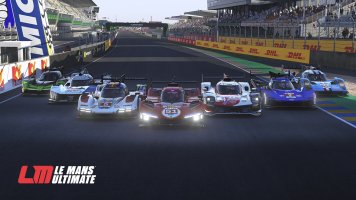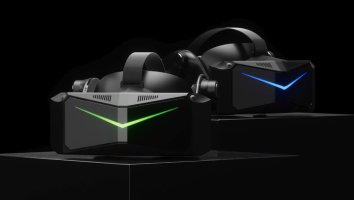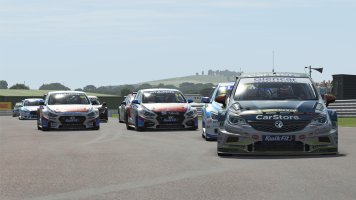Hey all,
Recently getting into sim racing, but am on a budget, so am running a playseat challenge as my 'rig', with a t300rs. I'd like a little more tactile feedback so am investigating tactile options.
im currently considering 4x Dayton DAEX32EP two of which mounted direct to the brake and throttle pedals and two mounted on the back of the seat pressed up against the fabric with some hard plastic plates. Also thinking to add 2x Dayton BST-2 mounted on the tubes on the sides of the playseat challenge for the lower frequency effects (10-80hz).
This feels like it would give me a pretty reasonable range of frequencies and positions for around $140.
To run these I'm considering a generic 7.1 external usb sound card (Vantec)
Finally I need amplifiers, which is the main topic of this post.
I initially considered the super budget amps found on amazon and ebay, obviously super basic, but likely workable for the small bst-2 and exciters and only around 15$ for 2 channels.
But then I found the Dayton DSPB-250. This little board gives you 2x 50w output and has a dsp chip that can be custom programmed in Sigma Studio. It does require an additional programmer board, but together this costs around 50$.
This seems like it might be a great option for an expandable budget setup? After getting the 20$ programmer it's only 35$ for 2x dsp capable channels at 50w 4ohms.
The software isn't super friendly but likely some generic settings could be shared in the community for common exciters/thrusters.
So I guess my question becomes is it worth using DSP on the common exciters like DAEX32ep and budget shakers like the BST-2 or BST-1 or even the super budget TT25?
Recently getting into sim racing, but am on a budget, so am running a playseat challenge as my 'rig', with a t300rs. I'd like a little more tactile feedback so am investigating tactile options.
im currently considering 4x Dayton DAEX32EP two of which mounted direct to the brake and throttle pedals and two mounted on the back of the seat pressed up against the fabric with some hard plastic plates. Also thinking to add 2x Dayton BST-2 mounted on the tubes on the sides of the playseat challenge for the lower frequency effects (10-80hz).
This feels like it would give me a pretty reasonable range of frequencies and positions for around $140.
To run these I'm considering a generic 7.1 external usb sound card (Vantec)
Finally I need amplifiers, which is the main topic of this post.
I initially considered the super budget amps found on amazon and ebay, obviously super basic, but likely workable for the small bst-2 and exciters and only around 15$ for 2 channels.
But then I found the Dayton DSPB-250. This little board gives you 2x 50w output and has a dsp chip that can be custom programmed in Sigma Studio. It does require an additional programmer board, but together this costs around 50$.
This seems like it might be a great option for an expandable budget setup? After getting the 20$ programmer it's only 35$ for 2x dsp capable channels at 50w 4ohms.
The software isn't super friendly but likely some generic settings could be shared in the community for common exciters/thrusters.
So I guess my question becomes is it worth using DSP on the common exciters like DAEX32ep and budget shakers like the BST-2 or BST-1 or even the super budget TT25?
Last edited:












